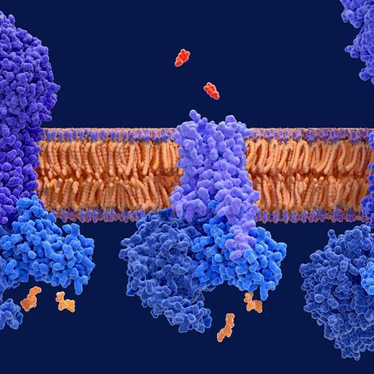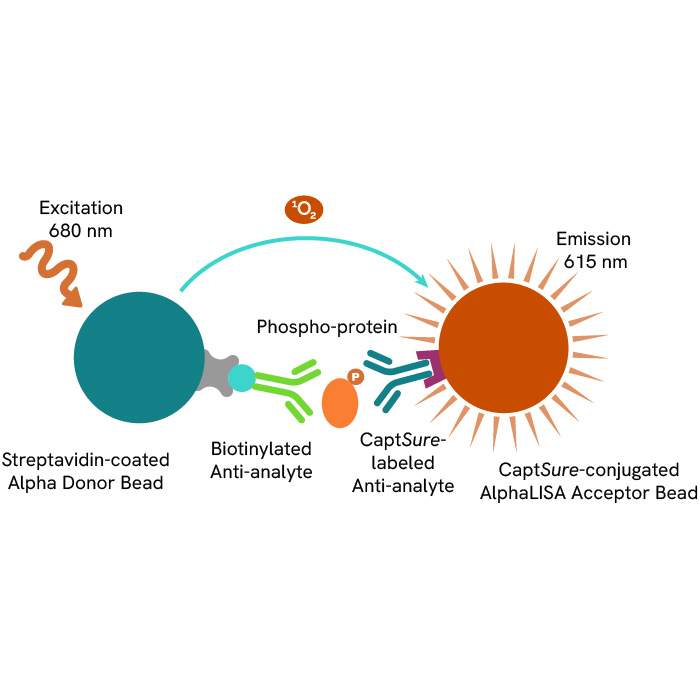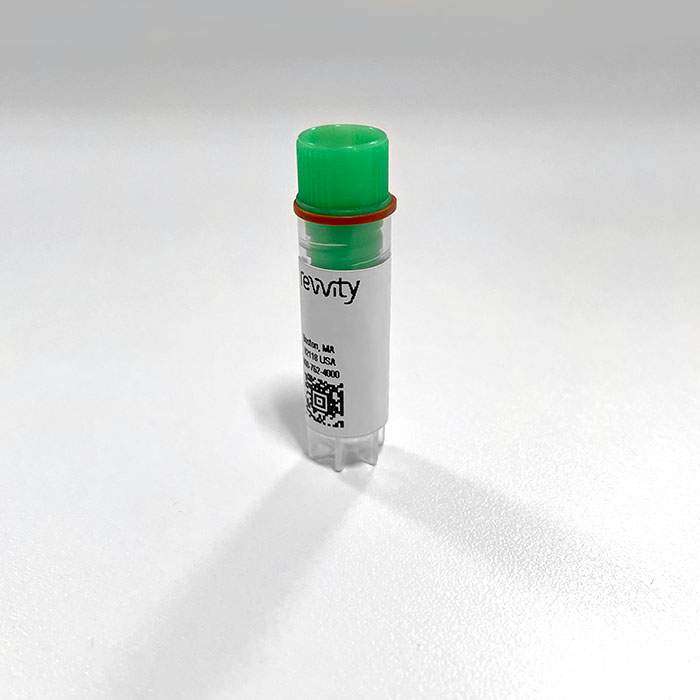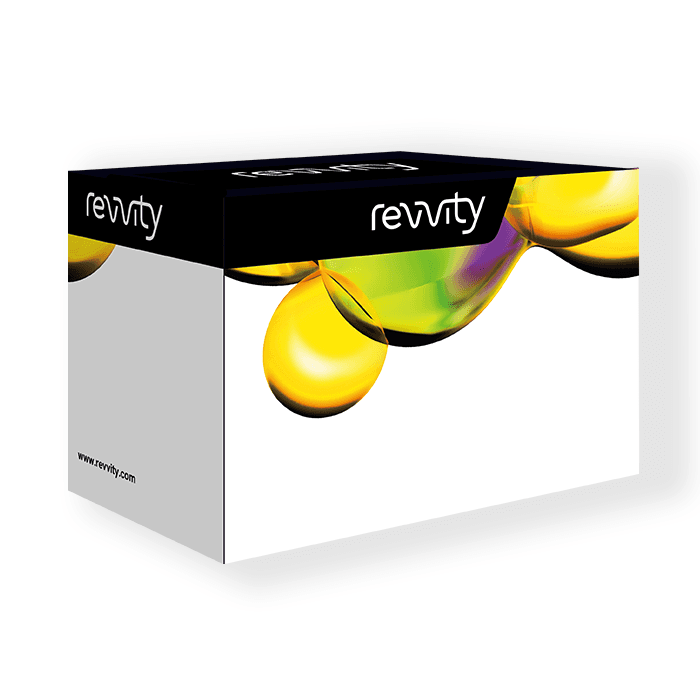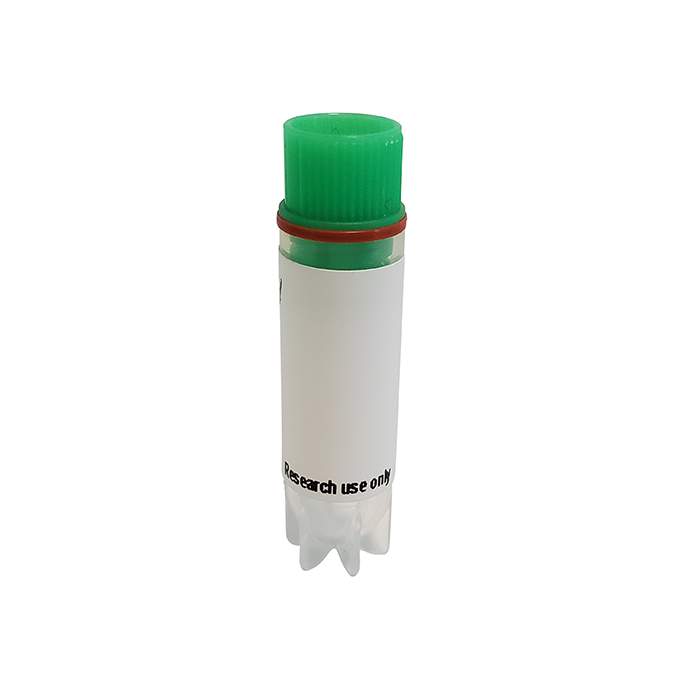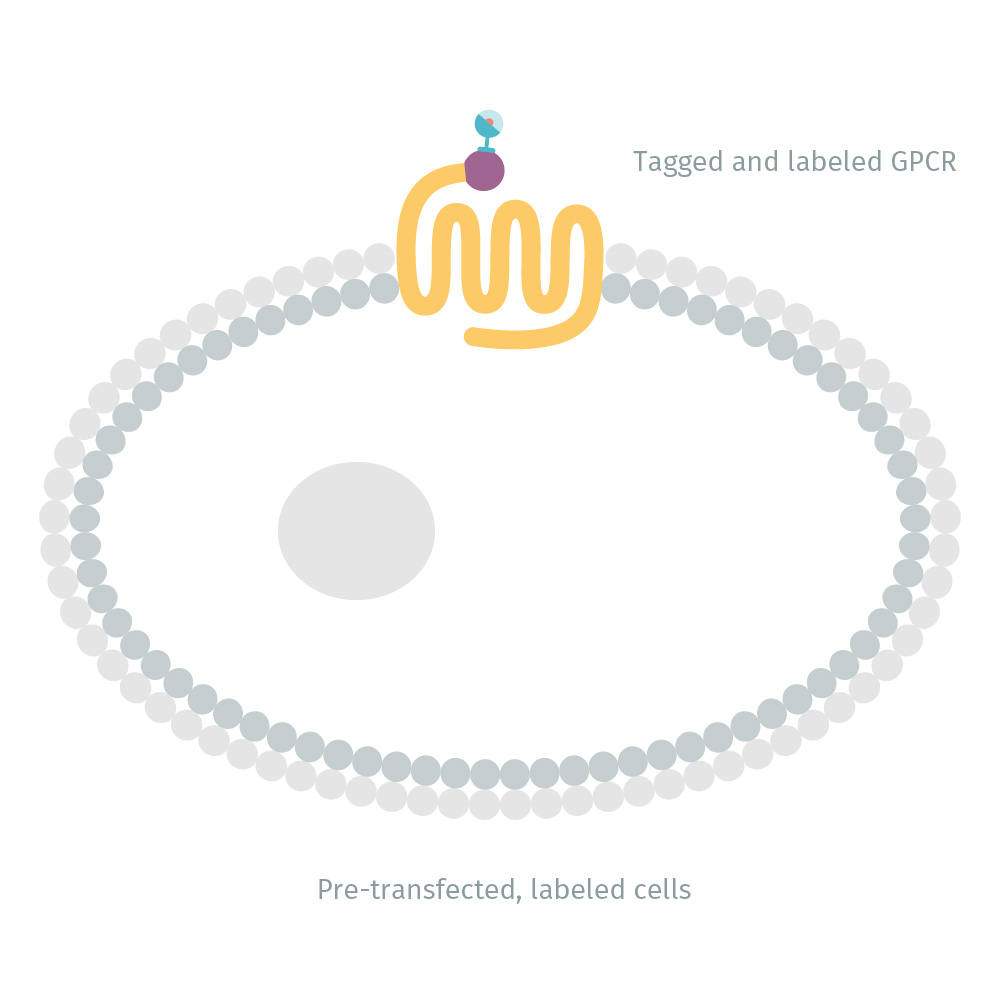
Ligand binding
The ligand/receptor binding is the first key step in GPCR signaling. Revvity offers a range of ligand/receptor interaction solutions in both radioactive format and fluorescence assays with our proprietary HTRF-based Tag-lite technology.
The ligand/receptor binding is the first key step in GPCR signaling. Revvity offers a range of ligand/receptor interaction solutions in both radioactive format and fluorescence assays with our proprietary HTRF-based Tag-lite technology.
-
Tag-lite - Tag-lite is a non-radioactive TR-FRET-based solution which can be used to assess the pharmacology and pharmacodynamics of ligand/receptor interactions. The receptor of interest is labeled with cryptate in a way that does not alter receptor binding. The corresponding ligand is labeled with d2 acceptor. When the d2-labeled ligand binds to the cryptate-labeled receptor, it produces a HTRF signal.
In a competition assay, the introduction of a competing small molecule dislodges the d2-labeled ligand. Consequently, the ligand is pushed away and the signal stops.
-
Receptor ligand binding with radiolabeled ligands and GPCR membranes - We also offer a range of radioactive ligands, which are used to study molecular interactions and QC our GPCR over-expressing cell lines and membrane preparations. Radiometric ligand binding assays are conducted on cells or cell membranes containing a GPCR receptor of interest. Radioligands can be used to perform saturation curves, competition, and kinetic experiments.
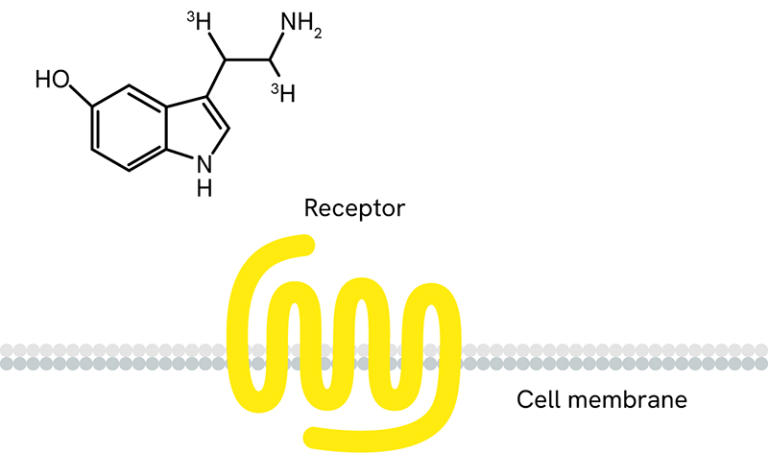
- Radioactive ligand binding assays can be performed in several different formats. Typically, we perform this assay in filtration format, where the unbound ligand is washed away using a vacuum manifold or cell harvester. The assay can also be conducted in a homogenous Scintillation Proximity Assay (SPA) format, where no wash steps are required.
Over 100 GPCR-expressing membrane preparations are validated for receptor ligand binding and over 50 are validated for GTPγS binding.
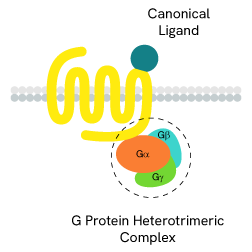
G-protein activation
The main signal transduction of GPCRs is dependent on the receptor-mediated activation of heterotrimeric G-proteins.
The main signal transduction of GPCRs is dependent on the receptor-mediated activation of heterotrimeric G-proteins.
G-proteins are composed of three subunits (Gα, Gβ and Gγ) and are classified into four families (Gs, Gi/o, Gq/11, and G12/13):
- Gαs-coupled GPCRs positively stimulate the activity of adenylate cyclase, resulting in an increase in cellular cAMP
- Gαi-coupled GPCRs lead to a negative regulation of adenylate cyclase, and thus to a decrease in cAMP production
-
Gαq protein signaling is based on enzymes of the phospholipase C family (PLC).

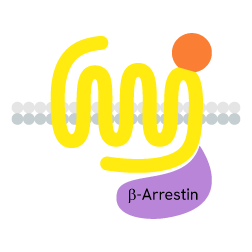
Arrestins recruitment
GPCRs also initiate G-protein-independent pathways that instead rely on arrestin coupling, which in turn suppresses G-protein activation.
GPCRs also initiate G-protein-independent pathways that instead rely on arrestin coupling, which in turn suppresses G-protein activation.
When a ligand binds to the extracellular part of a GPCR, the receptor undergoes conformational changes and opens its intracellular part to be phosphorylated by kinases. This phosphorylation of GPCRs by GRKs (GPCR kinases) is a prerequisite for high-affinity arrestin binding. The phosphorylated GPCR becomes a binding site for arrestins. Once linked, arrestins can interact with several partners such as AP2 or signaling proteins.

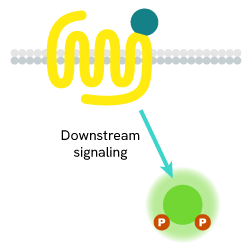
Intracellular signaling
GPCRs are at the beginning of many phosphorylation cascades involving phosphatases bound to second messengers.
GPCRs are at the beginning of many phosphorylation cascades involving phosphatases bound to second messengers.
Following the activation of a GPCR, signals are sent via G-proteins and arrestins to second messengers. Each GPCR has its own signaling pathway, but kinases and phosphatases are always involved and promote phosphorylation cascades to the nucleus. These molecular events are implicated in many physiological and cellular processes such as cell survival, proliferation, differentiation, and metabolism.
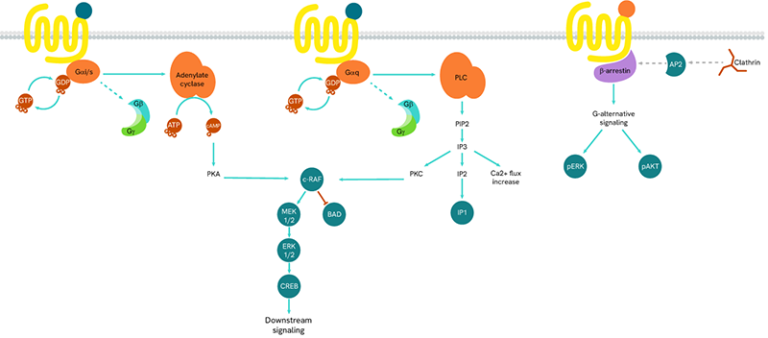
Featured resources


Filters
1 - 25 of 237 Products and Services
The AlphaLISA™ SureFire® Ultra™ p-ERK 1/2 (Thr202/Tyr204) assay is a sandwich immunoassay for quantitative detection of phospho-ERK 1/2 (phosphorylated on Thr202/Tyr204 in ERK1, or Thr185/Tyr187 in ERK2) in cellular lysates using Alpha Technology.
Cell membranes prepared from cells stably-transfected with human Vasopressin V1a receptor, in HEK-293 cells.
Cell membranes prepared from HEK293 cells stably transfected with human opioid kappa (OP2) receptor, 400 units.
This HTRF kit is designed for robust cell-based quantification of AKT2 modulation, phosphorylated on Ser473.
The Total Beta-arrestin 2 kit enables the cell-based quantitative detection of beta-arrestin 2, for monitoring GPCR activity.
Mek1/2 P-s218/222 Kit - 50,000 Tests
Our Membrane Target Systems: Melatonin MT1 (human) membranes are prepared from cells that express recombinant or endogenous receptors. Selected for optimal performance in binding assays.
The AlphaLISA™ SureFire® Ultra™ p-CREB (Ser133) assay is a sandwich immunoassay for quantitative detection of phospho-CREB (phosphorylated on Ser133) in cellular lysates using Alpha Technology.
Our Membrane Target Systems: Melatonin MT2 (human) membranes are prepared from cells that express recombinant or endogenous receptors. Selected for optimal performance in binding assays.
The Phospho-MEK1 (Ser218/222) kit enables the cell-based detection of MEK1 protein phosphorylated at Ser218/222 when studying the RAS-RAF-MEK cascade in the MAPK/ERK pathway.
Cell membranes prepared from cells stably-transfected with human Neurotensin NTS1 receptor, in HEK-293 cells.
Cell membranes prepared from CHO-K1 cells stably-transfected with human GABA B1a receptor, 400 units.
The total MEK1 kit quantifies cellular endogenous MEK1 when studying the MAPK/ERK pathway, and can be used as a normalization assay for the phospho-MEK1 kit.
Cell membranes prepared from HEK293 cells stably-transfected with human opioid delta receptor, 400 units.
The AlphaLISA™ SureFire® Ultra™ p-AKT1/2/3 (Thr308) assay is a sandwich immunoassay for quantitative detection of phospho-AKT1/2/3 (phosphorylated on Thr308) in cellular lysates using Alpha Technology.
The total Beta-arrestin 1 kit enables the cell-based quantitative detection of beta-arrestin 1, for monitoring GPCR activity.
This HTRF kit enables the cell-based quantitative detection of MEK1 phosphorylation at Ser298.
The total AP2 kit enables the cell-based quantitative detection of AP2, for monitoring GPCR activity.
Cell membranes prepared from CHO-K1 cells stably-transfected with human Vasopressin V2 receptor, 400 units.
Cell membranes prepared from L cells stably-transfected with human dopamine D1 receptor, 400 units.
The phospho-CREB (S133) kit enables the cell-based quantitative detection of CREB when phosphorylated at Serine 133 as a readout of ERK pathway activation.
Tag-lite plasmid featuring a SNAP-Tag sequence, a T8 peptide sequence, and a Zeocin resistance gene.Cloning and expression of the GPCR of interest as a SNAP-Tag or CLIP-Tag fusion protein enables its subsequent labeling with Terbium.
Growth arrested AequoZen cell line expressing aequorin and the Orexin OX2 receptor, human recombinant, in CHO-K1 host cells.
Stable, recombinant AequoScreen® cell line expressing aequorin and the α2A Adrenergic receptor, human recombinant in CHO-K1 host cells.
Tag-lite cells transiently expressing the Angiotensin AT2 receptor labeled with Terbium for use in receptor binding applications. The cells are provided ready to use.































